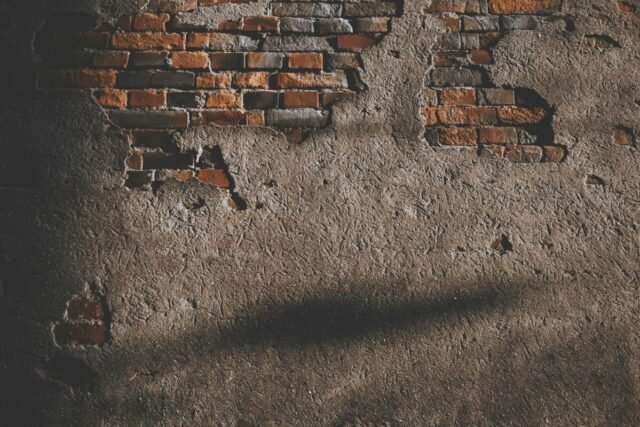Have you ever accidentally put a hole in your wall? Don't stress! Fixing wall holes is easier than you think. This guide will walk you through easy steps to fix holes of any size, leaving your walls looking flawless.
Assess the Damage – What Type of Hole Do You Have?
The first step is to assess the damage. Holes in walls can range from tiny nail holes to large gaps. The tools, materials, and repair method will depend on the hole's size and type.
Small Nail and Anchor Holes
Small nail holes less than 1⁄4 inch wide are the simplest to fix. These miniature holes are typically caused by hanging pictures, shelves, curtain rods, and other décor. Slightly larger anchor holes may exist from installing hooks, wall mounts, or other heavy items.
Luckily, small holes like these can be repaired in just a few easy steps using basic filling materials like spackle or joint compound. We'll cover how a bit later.
Larger Holes
If the hole in your wall is over 2 inches wide, things get trickier. Large holes this size are usually caused by doorknob collisions, moving furniture, or taking down shelving units built into the wall.
Repairing bigger holes requires cutting and installing wallboard patches for stability, then using joint compound to blend everything seamlessly. Extra steps like adding mesh tape, texturing, and extensive sanding are also needed for seamless repairs.
What Tools Will You Need?
The specific tools and materials required depends entirely on the size and type of damage. Here’s a quick overview:
- Small holes: putty knife, spackle, sandpaper
- Medium holes: joint compound, putty knife, sanding sponge, paint
- Large holes: drywall patch or scrap wallboard, joint compound, putty knife, mesh tape, texturing tools, sandpaper
For all repairs, you’ll also need common supplies like a drop cloth, primer, brushes, trays, and gloves. Having the right gear makes fixing wall holes much simpler.
Fixing Small Holes
For miniature nail holes and anchor holes under 2 inches wide, spackle or lightweight joint compound works wonders. Here’s a simple 5-step process:
Step 1: Clean and Prep
Use a damp sponge to wipe away any dirt or dust around the hole. This helps the filler adhere properly. For cleaner edges, you can scrape the inner hole edges with a utility knife.
Step 2: Apply Filler
Use a putty knife to apply spackle, lightweight joint compound, or drywall repair paste. Apply enough to slightly overfill the hole. Allow a few minutes for the filler to set slightly.
Step 3: Smooth the Surface
Drag the straight edge of your putty knife across the hole at a 45 degree angle to smooth the filler flat and remove any excess.
Step 4: Let Dry
Allow the filler to fully dry as directed on the package, usually 24 hours. The filled hole may shrink slightly as it dries.
Step 5: Sand and Paint
If needed, use fine-grit sandpaper to smooth out the area so it’s flush with the wall surface. Carefully prime and paint the patch with a small brush. Make sure to match the existing wall color.
Follow these simple spackle and joint compound fix steps, and those small annoying wall holes can disappear in no time! The smaller the damage, the easier it is to achieve seamless repairs.
Fixing Medium to Large Holes
For holes larger than 2 inches across, using filler alone is not effective. The hole must be patched with support materials first for stability. Here are step-by-step instructions for properly patching bigger wall holes:
Step 1: Cut a Wallboard Patch
Use a drywall saw to cut a rectangular or square patch at least 2 inches wider than the hole on all sides. Cut from scrap drywall or purchase pre-cut wallboard patches.
Step 2: Secure and Support
For weight-bearing holes or large gaps, use wood furring strips attached to wall studs with drywall screws. This provides a solid backing to install the drywall patch on.
Step 3: Apply Mesh Tape
Center the wallboard patch over the hole and secure with drywall screws. Cover all seams between the existing wall and patch with self-adhesive fiberglass mesh tape. This supports and strengthens the repair.
Step 4: Mud and Tape
Use a drywall knife to apply lightweight joint compound over all seams and mesh tape. Apply thin, smooth layers and allow each coat to fully dry 24 hours before adding more compound.
Step 5: Blend and Finish
Continue applying joint compound in thin layers until the patch is perfectly flush and smooth with the surrounding wall. Allow to fully dry between coats. Lightly sand if needed.
Step 6: Texture and Paint
Match wall texture using spray texture or hand texturing tools. Allow to dry fully, then use a small angled trim brush to prime and paint the patch. Blend into existing paint for a seamless look.
It takes precision, patience, and the right materials to achieve flawless repairs, but these steps make fixing even huge wall holes seem doable.
Fix Wall Holes and Prevent New Ones Too
With the right preparation and materials for each project, repairing wall holes is totally manageable. Follow these tips to restore flawless walls:
Assess the damage – Determine hole size and type to plan repair strategy.
Use the proper filler – Small holes under 2” wide can use spackle or lightweight joint compound. Larger holes require wallboard patches for support.
Take your time – Allow each layer of compound or filler to dry fully before adding more. Rushing leads to cracks and imperfections.
Blend textures and paint – Match surface textures and colors for invisible repairs.
And lastly, pay attention to open doors and furniture placement to help prevent new wall damage going forward. With these hole repair tips, you can fix imperfections and maintain beautiful walls for years to come.































